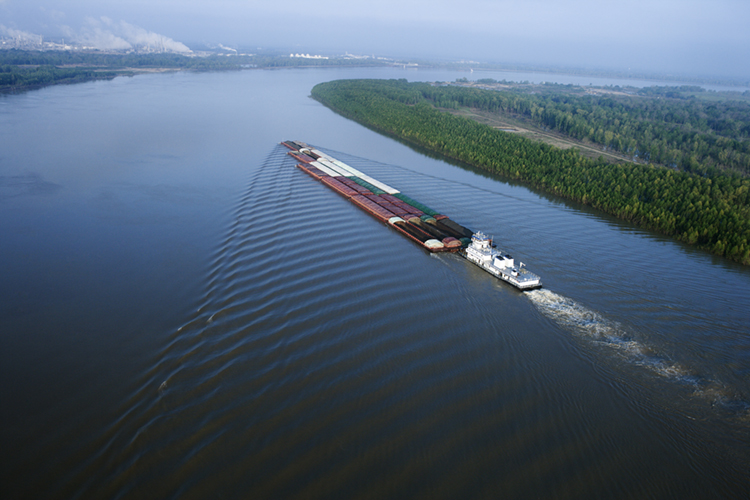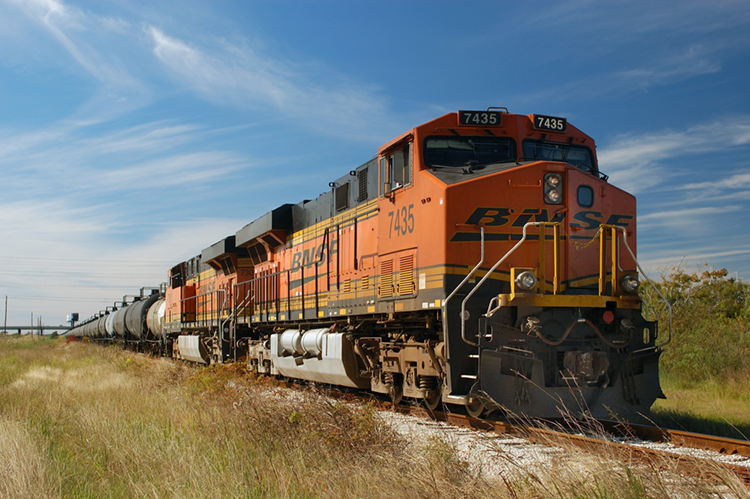Whole cottonseed is a valuable dietary supplement for ruminants because of the balanced combination of fat, protein, and fiber1. Cottonseed is grown in the South and transported via barge, rail, or truck to dairy farms in the Midwest and West. The distance from field to feed presents logistical challenges.

Barge
Cottonseed is commonly transported by barge, making it accessible to dairies in the Upper Midwest.
“The barges are really cheap freight. You can move cottonseed a lot of miles for very little money,” said David Page, cottonseed merchandiser at Harvey’s Commodities.
There are many touchpoints with barge travel; the product has to be trucked from the gin to the terminal, taken in at its destination, warehoused, and transported to a farm, Page explained. This creates opportunities for things to go awry, due to staffing shortages, inclimate weather, or lock closures.

Rail
When barge travel isn’t an option, cottonseed merchandisers rely on rail. Cottonseed is notorious for its lack of “flowability.” Better ginning practices and packing methods and the introduction of gondola cars have increased the amount of tonnage transported per shipment, said Larry Johnson, cottonseed market expert.
The increase in tonnage is offset by longer turn times – the amount of time it takes a railcar to get to its destination and back again – due to labor shortages.
“It was once normal to get a full turn from the mid-south region out to California and back within a month,” said Amy May Hopper, a cottonseed trader with The Andersons. “And this year during harvest, we were fighting to get two-thirds of a turn in that time. That’s inhibited the amount of seed that the industry has been able to move, and honestly, it hasn’t gotten better.”
Truck
The third way to transport cottonseed is by truck, but this method of transportation has recently been constrained by labor shortages.
“I do have a real fear for the next harvest. What are we going to have left in the ag industry, carrier-wise?” Hopper said, going on to explain that the trucking companies that the industry has historically relied on are losing drivers “left and right.”
Fuel costs are also a limiting factor when it comes to transporting cottonseed via truck.
“We can put 22 tons of fuzzy cottonseed on a semi-truck, but once you start calculating in fuel costs from West Texas to a dairy farm in Wisconsin, that’s where it really becomes cost prohibitive,” said Robert Cossar, a cottonseed product manager at Winfield United.
Risk reducing strategies for dairy farmers
Farmers concerned about the price or availability of whole cottonseed should work with a reputable reseller. Trent Dado, an independent nutritionist, advises farmers to look at their margins when considering whole cottonseed.
“Right now, milk prices are at historic highs,” Dado said. “We need to be concerned with doing what’s right for the cows, and whole cottonseed can be a great dietary supplement that replaces expensive forages or oils.”
1 Cranston, J. J. et. al. 2006. “Effects of feeding whole cottonseed and cottonseed products on performance and carcass characteristics of finishing beef cattle.” J. Anim. Sci. 84:2186–2199. doi:10.2527/ jas.2005-669



